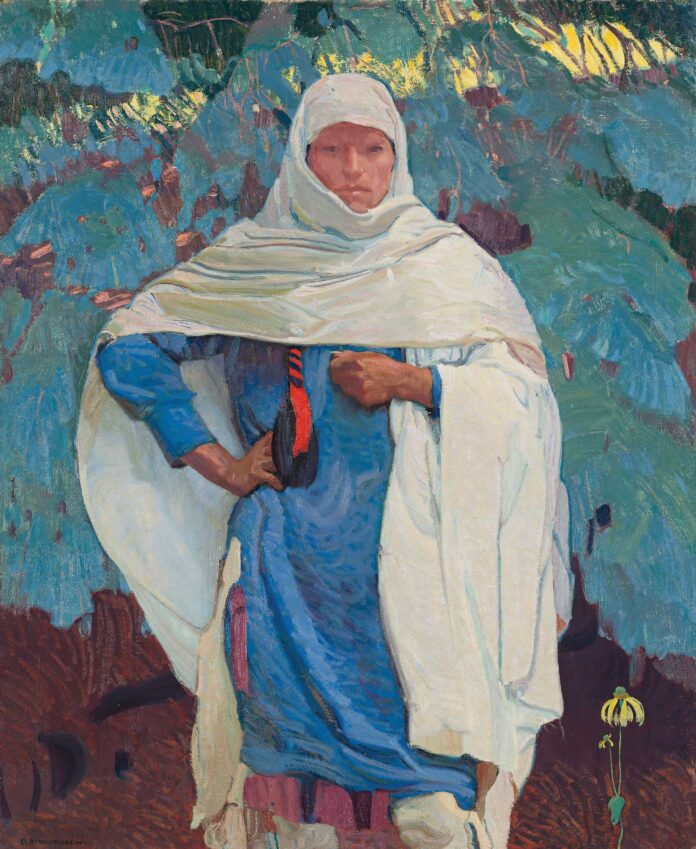
“Near East to Far West: Fictions of French and American Colonialism”
Denver Art Museum, Colorado
denverartmuseum.org
Through May 28, 2023
The Denver Art Museum (DAM) is set to open “Near East to Far West: Fictions of French and American Colonialism,” a major exhibition organized by Jennifer R. Henneman, director of the museum’s Petrie Institute of Western American Art. It features more than 80 paintings, sculptures, works on paper, and decorative arts that explore the many ways the style and substance of French Orientalism directly influenced American artists and their representations of the West.
France began its colonial expansion into Algeria in the 1830s, and its internationally admired artists’ scenes of what they saw there — and elsewhere in North Africa — soon presented a template for how American artists might depict the landscapes and people of the American West being transformed during the 1849 California Gold Rush and after. The styles, motifs, and meanings of both French Oriental-ism and Western artworks reflect their creators’ fears, desires, and curiosities about “unknown” lands during the process of colonization.
“In the 19th and early 20th centuries,” DAM director Christoph Heinrich says, “regions of the American West were as foreign and unfamiliar to many Americans as places like Morocco and Algeria were to Parisians. Through the paintings, this show begins to tease apart the facts and fictions presented in the art of the time.”
The project opens by introducing French Orientalists like Eugène Fromentin, Jean-Joseph Benjamin-Constant, and Alexandre-Gabriel Decamps, as well as American Orientalists including Fredric Arthur Bridgman and Elizabeth Nourse. It leads to master paintings by Eugène Delacroix, Jean-Léon Gérôme, Alfred Jacob Miller, and George de Forest Brush. Works by Charles M. Russell and Fred-eric Remington underscore the fact that an artist did not actually need to travel to North Africa to be influenced by its imagery.
Among the intriguing topics explored are Delacroix’s influence on American artist Alfred Jacob Miller; the impact of popular literature — especially The Arabian Nights and the Bible — on representations of desert regions; the effects of westward expansion on the environment; and the crucial role of world’s fairs in disseminating Orientalized ideas about global Indigenous cultures.
Close attention is also paid to the French training of members of the Taos Society of Artists including Joseph Henry Sharp, Bert G. Phillips, and Ernest Blumenschein. Their interest in the geography and cultures of the Taos area echoes their Parisian teachers’ fascination with North Africa; this is best seen in their depictions of the high desert’s clear air, brilliant colors, and expansive scenery.
The exhibition’s handsome catalog is being distributed by Yale University Press.






